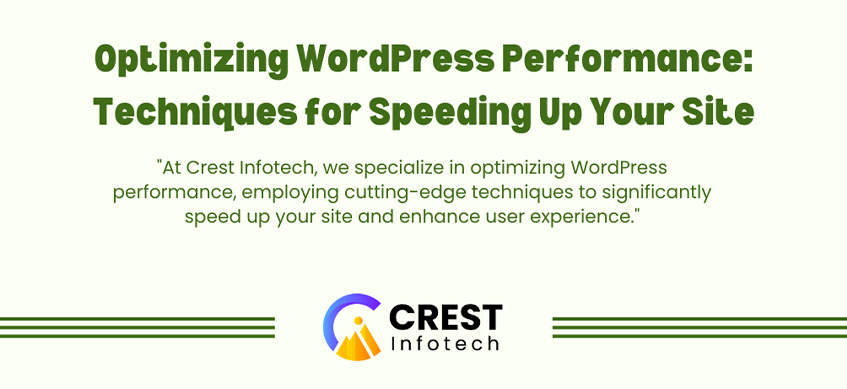A fast-loading website is crucial for user experience, search engine rankings, and overall success. WordPress sites can become sluggish over time, but with the right optimization techniques, you can significantly enhance performance. Here are some effective strategies to speed up your WordPress site.
1. Choose a Reliable Hosting Provider
The foundation of a fast website begins with your hosting provider.
- Select Quality Hosting: Opt for a reputable host that specializes in WordPress hosting. Look for features like SSD storage, optimized server configurations, and excellent customer support.
- Consider Managed WordPress Hosting: Managed hosting services handle technical aspects, offering performance optimizations and security measures.
2. Use a Lightweight Theme
The theme you choose impacts your site’s speed.
- Select a Lightweight Theme: Opt for a theme that is clean, minimalistic, and optimized for speed. Avoid themes with excessive features and bloat.
- Optimize Theme Code: If you’re comfortable with coding, consider customizing your theme to remove unnecessary elements.
3. Implement Caching
Caching is one of the most effective ways to improve performance.
- Use Caching Plugins: Plugins like WP Super Cache or W3 Total Cache generate static HTML files, reducing server load and speeding up page delivery.
- Browser Caching: Configure browser caching to store static files on users’ devices, enabling faster load times on subsequent visits.
4. Optimize Images
Large image files can significantly slow down your site.
- Use Proper Formats: Choose the right image formats (JPEG for photos, PNG for graphics) to reduce file sizes.
- Image Compression: Use plugins like Smush or ShortPixel to compress images without sacrificing quality.
- Lazy Loading: Implement lazy loading to defer loading images until they’re visible in the viewport, reducing initial page load times.
5. Minimize HTTP Requests
Fewer HTTP requests lead to faster loading times.
- Reduce Plugins: Deactivate and delete unnecessary plugins that add extra scripts and styles.
- Combine Files: Use plugins like Autoptimize to combine CSS and JavaScript files, reducing the number of requests.
6. Optimize Your Database
A cluttered database can hinder performance.
- Database Optimization Plugins: Use plugins like WP-Optimize or WP-Sweep to clean up and optimize your database by removing post revisions, spam comments, and transient options.
- Regular Maintenance: Schedule regular database maintenance to keep it optimized and efficient.
7. Utilize a Content Delivery Network (CDN)
A CDN distributes your content across multiple servers worldwide.
- Choose a CDN: Services like Cloudflare or StackPath cache your site’s static files and serve them from the nearest location to your visitors, reducing latency and load times.
- Integrate with WordPress: Many CDNs offer easy integration with WordPress, making setup straightforward.
8. Minify CSS, JavaScript, and HTML
Reducing file sizes can lead to faster loading times.
- Minification Plugins: Use plugins like WP Minify or Autoptimize to remove unnecessary characters, comments, and whitespace from your code.
- Combine Files: In addition to minification, combine multiple files into one to further reduce requests.
9. Disable Hotlinking and Leeching
Prevent other sites from using your bandwidth.
- Modify .htaccess File: Add rules to your
.htaccessfile to block hotlinking and restrict access to your images and other media.
10. Limit Post Revisions
By default, WordPress saves every change you make.
- Control Revisions: Add the following line to your
wp-config.phpfile to limit post revisions:
define('WP_POST_REVISIONS', 5); // Limits to 5 revisions
11. Regular Performance Testing
Keep an eye on your site’s performance.
- Use Performance Tools: Utilize tools like Google PageSpeed Insights, GTmetrix, or Pingdom to analyze your site’s speed and get suggestions for improvement.
- Regular Monitoring: Periodically test your site after making changes to see their impact on performance.
Conclusion
Optimizing your WordPress site for speed is essential for providing a great user experience and improving search engine rankings. By implementing these techniques, you can significantly enhance your site’s performance and keep your visitors engaged. Regular maintenance and monitoring will ensure that your site remains fast and efficient over time. Start optimizing today for a smoother, faster WordPress experience!



